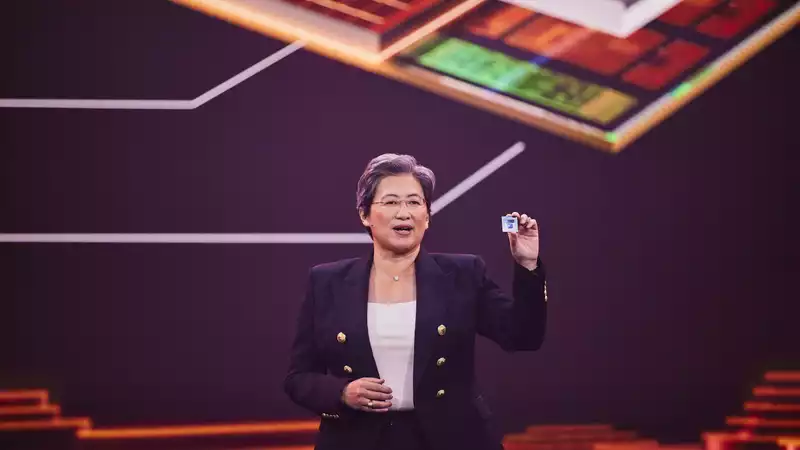After announcing mobile GPUs, Zen 3 APUs, and some tasty details about FidelityFX super-resolution, AMD ended its Computex keynote with the unveiling of a brand new 3D chiplet technology. Admittedly, this is not usually something to get too excited about, but it is quite impressive and can bring seemingly significant performance gains in gaming.
3D chiplet technology allows circuits to be stacked on top of each other, and AMD showed what is possible with this technology, using the example of a 3D vertical cache (3D V-cache) where the cache memory is placed on top of existing silicon. The cache memory is placed on top of the existing silicon.
Dr. Lisa Su demonstrated this new technology using a Ryzen 9 5900X prototype with a total of 192 MB of L3 cache. Yes, 192 MB. The current version of this chip has 64 MB, which is considered more than healthy for a modern CPU, but this prototype has three times that amount.
The additional cache is mounted on top of the chip and connected by TSVs (through-silicon vias). From this tweet by Andreas Schilling, we can infer that TSVs have been on board since the Zen 3 was announced.
One thing AMD discovered with the Zen 3 architecture is that games love low-latency local caches. With more cache on this chip, logically performance should improve, and in fact, that is exactly what Dr. Lisa Su showed at Computex, where the 5900X prototype recorded 1080p and 206 fps on Gears V, while the regular chip recorded 184 fps. This represents a 12% increase in performance without completely redesigning the architecture.
AMD further demonstrated performance gains over the current model for five games with the new 3D V-cache. All are at 1080p and the chips are fixed at 4 GHz for easy comparison.
This is not bad considering it is essentially the same architecture as the current Ryzen 5000 chip, albeit with new packaging simply to increase the amount of cache. In fact, AMD tested this new chip in a total of 32 games and achieved a final 15% improvement. This is a good indication that this is a consistent and representative improvement and not based on a select handful of titles.
So the 3D V-cache technology works, but when will we see it? Dr. Lisa Suh concluded her keynote by saying, "We have actually made significant progress in the overall development of this technology and will be ready to begin production of top-of-the-line products with 3D chiplets by the end of this year."
AMD has reportedly discontinued the Warhol refresh, which could mean that they are preparing to release 3D V-cache versions of their existing chips in order to achieve a 15% improvement in gaming. This is not a bad idea and could be Intel's real answer to Alder Lake.


Comments